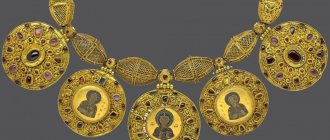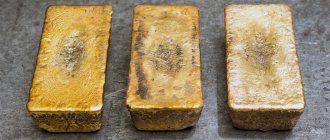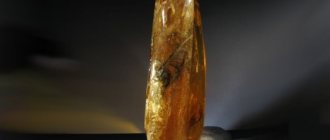What kind of glass was installed in windows in the old days?
Of course, the windows themselves were there then, but it was possible to look out onto the street only in the warm season, when the windows were thrown wide open. At other times, they were tightly closed to prevent the house from getting cold.
The need for a window arose in the old days, when huts were heated “black” - the stoves did not have pipes, and the smoke came out through an opening in the ceiling. But if there was no wind outside, it accumulated in the hut. I had to open the door. However, this did not help much, since a draft was required.
For this purpose, even during the construction of the hut, a small square hole called an “vent” was made in the wall. During the cold season, it was covered with matting and opened only when the stove was lit. A small constant draft was created due to the open “vent” and the slightly open door.
Later they came up with the idea of closing the vent with a dried bull's bladder. Although it was not transparent, it still let some light into the hut, partially solving the lighting problem.
V. E. Makovsky, “In the forester’s hut” Photo: artchive.ru
Wealthy people could afford stained glass windows made from flat mountain quartz stones - it gave more light and looked beautiful due to the use of quartz stones with different shades. And the window itself was no longer an “outlet” the size of a man’s fist, but a real decoration for the home.
The window was decorated with platbands, shutters, and wood carvings. In houses made of other building materials, plaster molding and natural stone finishing were used.
In villages, windows remained small for a long time. They were divided into parts according to the size of the bull bubble. The enlargement of windows occurred with the discovery of mica deposits. It could be “pinched” into thin and quite large plates (there were even workers who were called “pinchers”).
Mica window Photo: Lapot, ru.wikipedia.org
In areas with a warm climate, in winter, windows were covered with tanned skins. The hare ones were best suited. They cost little due to poor quality, but they kept the cold out of the windows. If more light was needed or a draft was needed, the skin attached to the rope was moved to the side or lifted up to a driven nail.
In areas where fishing was developed, dried fish press was used for windows. Paius is a fairly large organ in which fish eggs mature. It is clear that large fish were used as “glass” for the windows.
Even at the beginning of the twentieth century, large fish were found in rivers Photo: Source
The dried thin skin of fatty fish species, peeled from scales, was also used. Mainly carp family. Dressing required great care and considerable patience. For these reasons, it was not widely distributed.
Now there is no problem at all with how to create the required flow of light inside the room. In addition to regular window glass, you can insert glass with glued film. This glass protects against infrared and ultraviolet radiation. There are films that do not let heat in. Tinted glass for windows is also available. At the customer's request, the tinting can be any color. There are also so-called glare window glass. There is also impact-resistant window glass - it is difficult or impossible to break through with any object.
What's missing now! Progress does not stand still...
Tags: window glass, windows, lighting, old times
Life could have originated between layers of mica
Life on Earth could have arisen in the interlayer space of widespread mica minerals washed by the waters of ancient oceans. This hypothesis was proposed by Helen Hansma, a researcher at the University of California at Santa Barbara. She presented at the 47th annual meeting of the American Society for Cell Biology on Tuesday, December 4th.
close
100%
MICA
a family of widespread rock-forming minerals of great industrial importance. They are hydroxyl- and fluorine-containing aluminosilicates; in the four most common types - muscovite, biotite, phlogopite and...
Hansma's hypothesis states that the relatively narrow and confined volumes between the layers of atoms that form mica aluminosilicates could create the conditions necessary for the appearance of the first biological molecules. In addition, the layered structure of minerals could, at the dawn of the formation of life, function as a cell membrane, protecting unstable organic structures from the ruthless influences of the environment.
Hansma notes that even large molecules such as RNA or proteins could form in the interlayer space of mica. It was they, according to many scientists, who were the first molecular structures that marked the beginning of the development of living systems.
Hansma supports his theory with a number of interesting facts. For example, it is known that RNA, one of the carriers of hereditary information, is built from nitrogenous bases, ribose carbohydrate molecules and phosphate bridges connecting them. Phosphate bridges, otherwise orthophosphoric acid anions [HPO4]2-, carry a negative charge. Protein molecules are also chains of alternating positive and negative charges.
An interesting fact is that the distance between charges in ribonucleic acid - half a nanometer - is identical to the distance between the negatively charged [AlSi3O10] groups that make up the layers in the mica structure.
Apparently, the phosphate groups were subject to a certain spatial ordering in the spaces between the charged [AlSi3O10] clusters.
In addition, Hansma drew attention to the fact that the layers in mica minerals are connected to each other by positively charged potassium cations, and potassium in the form of anions is contained in large quantities in biological objects, and in a concentration close to the concentration of potassium in mica. Another coincidence is that the ocean waters that washed the mica minerals millions of years ago are still rich in sodium, just like the blood of animals and humans.
The energy for the formation and destruction of bonds in new biological molecules was supplied by the Sun and ocean waves. The sun heated the aluminosilicates, which transferred thermal energy to fragments of biological molecules. In addition, periodic heating and cooling of mica rocks led to the same periodic change in the interlayer distance, which determined the occurrence of certain chemical mechanisms. The distance between the charged clusters that make up the mica structure could have a strong influence on the geometric conformation of biological molecules.
Therefore, a change in the distance between the layers inevitably led to a change in the geometry of the molecules, and consequently determined the range of chemical transformations that a biological macromolecule could undergo. In addition, the disturbance of ocean waters also undoubtedly led to fluctuations in the distance between the layers of atoms of the mica structure.
Thus, micas created an environment favorable for the existence of biological macromolecules, protected them from external influences in the precellular era, and also provided the energy necessary for the formation and destruction of chemical bonds.
Characteristic features of micas, such as high concentrations of potassium ions in biological systems or the distances between charged atoms, may not have played a critical role in the emergence of life on Earth.
It is likely that, had they emerged under different conditions, modern biological molecules and complex biological systems would have looked different.
For example, if the distance between negatively charged clusters in mica minerals were smaller, then sulfuric acid could well be in place of phosphate groups in the RNA and DNA molecule today.
And, for example, Coca-Cola would not be diluted with a phosphate buffer solution based on orthophosphoric acid and its salts, but with a sulfuric buffer solution based on sulfuric acid. However, it is orthophosphoric acid that is not toxic to the human body and is now part of a large number of food products. Whether life would have developed differently in the course of evolution if phosphoric acid had been replaced by sulfuric acid, or whether it would have still come to Homo Sapiens and Coca-Cola - it is unlikely that we will ever be able to find out.
According to Hansma, her theory more clearly describes the process of the emergence of life on Earth than the theory of prehistoric “prebiotic soup” that wanders from one textbook to another. Let us recall that, according to the ideas of this model, biological molecules were formed in the form of clots and agglomerations in free liquid phases. This theory is unable to describe how the newly formed molecules managed to withstand harsh solar radiation, withstand strong temperature changes, form cellular structures in an environment completely unsuitable for this, and so on.
Another theory, also bearing the food name of “prehistoric pizza,” also turned out to be defeated.
According to it, the first biological molecules were formed on the surface of natural potassium - mineral-containing kaolins associated with clays. However, this theory still cannot explain how and where prehistoric biomolecules obtained water to form long polymer chains.
close
100%
Atomic force microscopy
a type of probe microscopy, which is based on the force interaction of atoms (strictly speaking, the exchange interaction of the atoms of the probe and the sample under study).
Helen Hansma has about thirty years of scientific experience, but she came to her theory of the origin of life largely by accident. She began as a biophysicist in the late 80s, studying the macromolecules of biopolymers using atomic force microscopy. Her research team always used natural mica as a substrate for molecules. The surface of this material can be practically free of defects and irregularities due to its layered structure. Bulk mica material can be split into ultra-smooth layers even without the help of special techniques.
Biopolymers on the surface of such a material are very clearly visible in AFM. Biophysicists still prefer to separate mica into plates using a special microscope that shows the position of the individual layers. One day, while separating mica into plates, Hanma discovered that they were covered with organic molecules. While studying these organic clumps, Hansma came up with the idea of the formation of the first organic biomolecules.
Hansma believes that at least a billion years must have passed between the appearance of the first protein molecules and RNA and the formation of the cytoplasmic membrane and cell wall. Only after this was life able to crawl out of its rocky shelter and go to colonize the lifeless planet.









